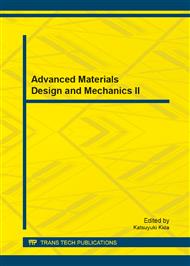p.301
p.305
p.309
p.314
p.321
p.325
p.331
p.336
p.340
A Reclamation System via a Pins-Module Tool for Touch Sensing Material Surfaces
Abstract:
This study demonstrates a designed pins-module tool and a precise reclamation system using a micro electroremoval process for sensing material of tin-doped indium oxide thin-films dissolved from a surface of polyethylene terephthalate of touch-panel. In the current experiment, a higher dissolution rate of the defective tin-doped indium oxide corresponds to high rotational speed of the cylinders tool with large flow rate of the electrolyte. A small diameter of the anode or a small diameter of the cathode combined with enough electric power, results in fast dissolution. The removal rate of tin-doped indium oxide thin-film is improved by decreasing the cylinders number. Importantly, the performance of a designed pins-module tool was found to be more effective in the micro electroremoval process. It requires only a short period of time to dissolve the nanostructured of tin-doped indium oxide easily and cleanly.
Info:
Periodical:
Pages:
321-324
Citation:
Online since:
August 2013
Authors:
Price:
Сopyright:
© 2013 Trans Tech Publications Ltd. All Rights Reserved
Share:
Citation:


